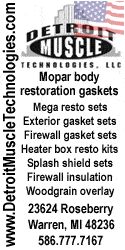Hi Everyone
I have a set of un-molested adjustable rocker arms from a 273. They have the original adjuster screws and the shafts and rocker internals are beautiful. My question is.....Can these be used on a set of 1971 2.02 J heads in their current state? I've read about sealing the top hole and drilling another in the armpit, as well as replacing the screws with lock nuts and spot facing the contact area. I would rather not modify them unless it is absolutely necessary to work on my heads. The car will only see street use, and won't be a screamer (.477/262).
Will they work as is without burning up?
Thanks.
Here is a thread I started a couple years ago. It has some good info.
Reworking the 273 Adjustable Rockers
















